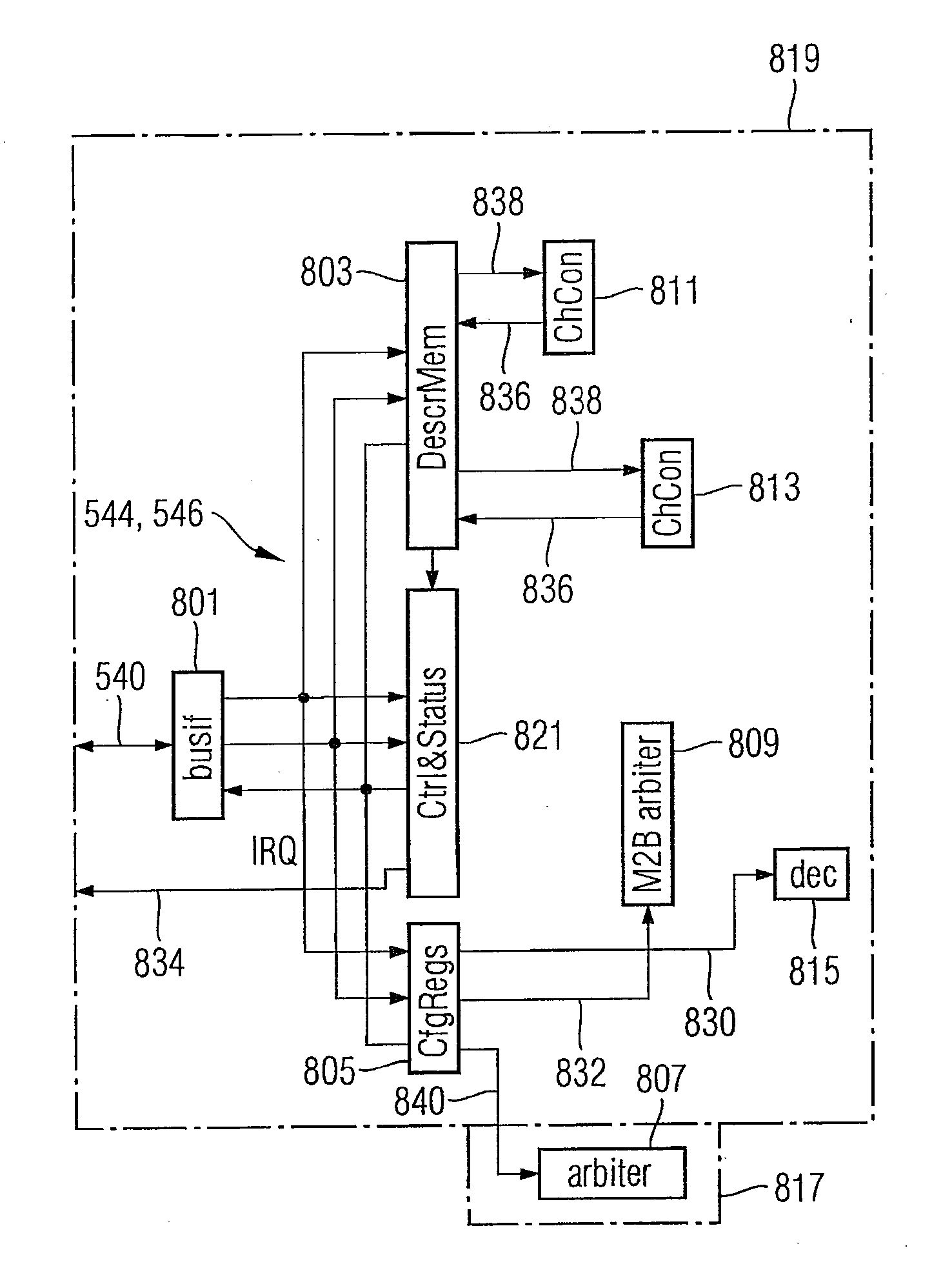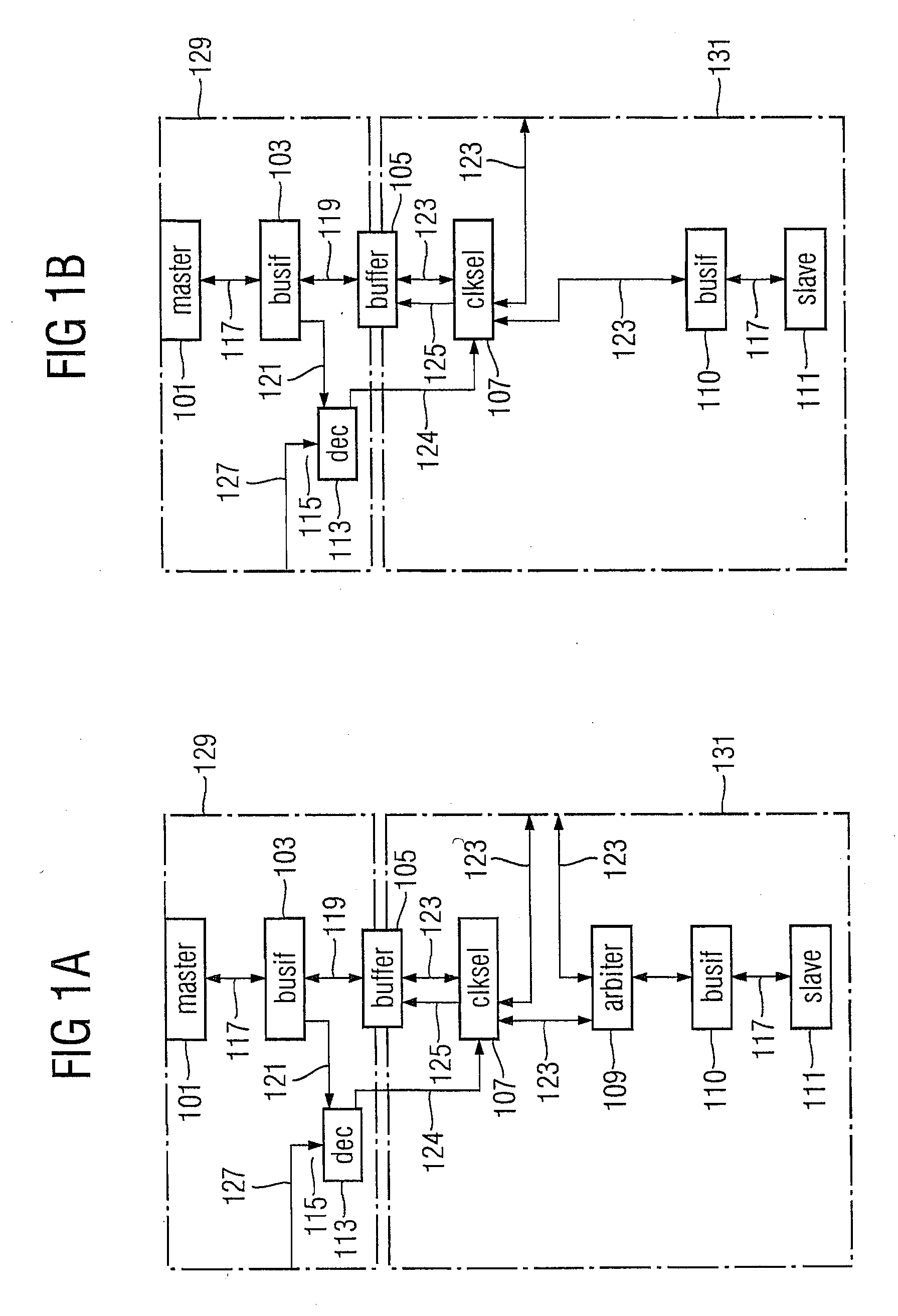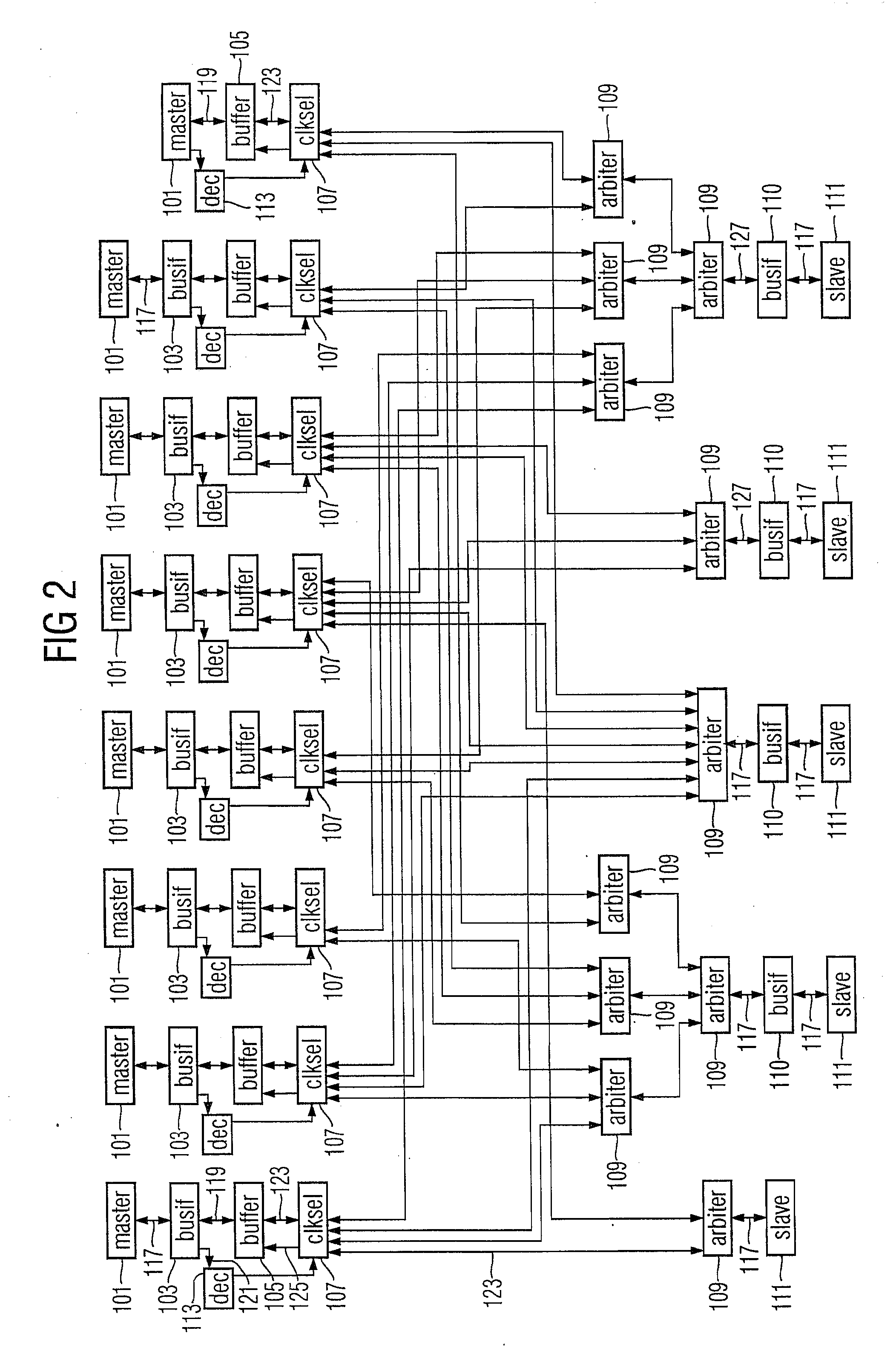Memory and Memory Communication System
a communication system and memory technology, applied in the field of memory systems, can solve the problems of large area consumption, high latency, and increase the surface area of the silicon, and achieve the effect of reducing the area needed for implementing the interconnect screen, and reducing the latency
- Summary
- Abstract
- Description
- Claims
- Application Information
AI Technical Summary
Benefits of technology
Problems solved by technology
Method used
Image
Examples
Embodiment Construction
[0071]FIG. 1a shows a block diagram of a memory system according to the invention. The memory system comprises a first processing unit 101, an interface 103 (Busif) coupled to the first processing unit 101, a memory element 105 (Buffer) coupled to the interface 103, a selection element 107 (CLKSEL=Clock Select), coupled to the memory element 105, an arbiter 109 coupled to the selection element 107, a further interface 110 coupled to the arbiter 109 and a second processing unit 111 coupled to the further interface 110. The memory system also comprises an identification element 113 which is coupled to the selection element 107. Furthermore, the interface 103 is coupled to the identification element 113 (DEC, decoder). The identification element 113 optionally comprises a further input 115. The selection element 107 optionally has a further input / output 123 for connection to further arbiters. The arbiter 109 optionally has a further input / output 123 for connection to other selection el...
PUM
 Login to View More
Login to View More Abstract
Description
Claims
Application Information
 Login to View More
Login to View More - R&D
- Intellectual Property
- Life Sciences
- Materials
- Tech Scout
- Unparalleled Data Quality
- Higher Quality Content
- 60% Fewer Hallucinations
Browse by: Latest US Patents, China's latest patents, Technical Efficacy Thesaurus, Application Domain, Technology Topic, Popular Technical Reports.
© 2025 PatSnap. All rights reserved.Legal|Privacy policy|Modern Slavery Act Transparency Statement|Sitemap|About US| Contact US: help@patsnap.com



